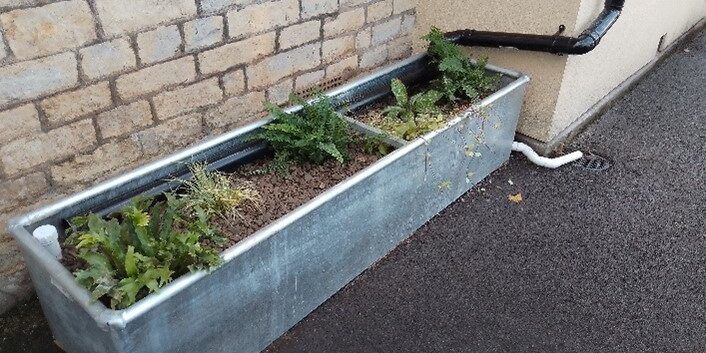We have installed seven fantastic rain planters and two water butts in three schools in the River Chew Catchment. The rain planters, made from steel cattle troughs, divert rain from the roof which would normally go straight down the drain. Rainwater is slowed down and a collection of hardy plants are provided with water. Slowing down rainwater contributes to flood resilience and helps prevent drains becoming overwhelmed, which can lead to sewage overflowing into our rivers.
Rain planters are a sustainable urban drainage system (SuDS). They are one of many strategies to slow down rainwater in a sustainable and environmentally friendly way. Other SuDS techniques include rain butts, permeable paving, green roofs and swales. At BART we encourage all forms of SuDS to help river health. Not only do they slow down water to help prevent floods and sewage overflow, they also improve water quality, provide habitat and often look fantastic.
The first step to install a school rain planter was to divert the downpipe; instead of rain going straight down the drain, it is diverted into the planter. Secondly, an overflow system was installed so that the planter does not flood in extreme rain events. Children from the schools then helped to fill the planter with a mixture of clay pellets, top soil and compost.
The children helped decide where to plant the carefully chosen hardy perennials and got stuck in planting. The plants can tolerate very wet conditions, but also periods of drought as in the summer months they may not get much rain. We can’t wait to see how the plants grow into the space and provide a beautiful, eye-catching addition to the schools.
This project is funded by the Government’s Green Recovery Challenge Fund. The fund was developed by Defra and its Arm’s-Length Bodies. It is being delivered by The National Lottery Heritage Fund in partnership with Natural England, the Environment Agency and Forestry Commission.








